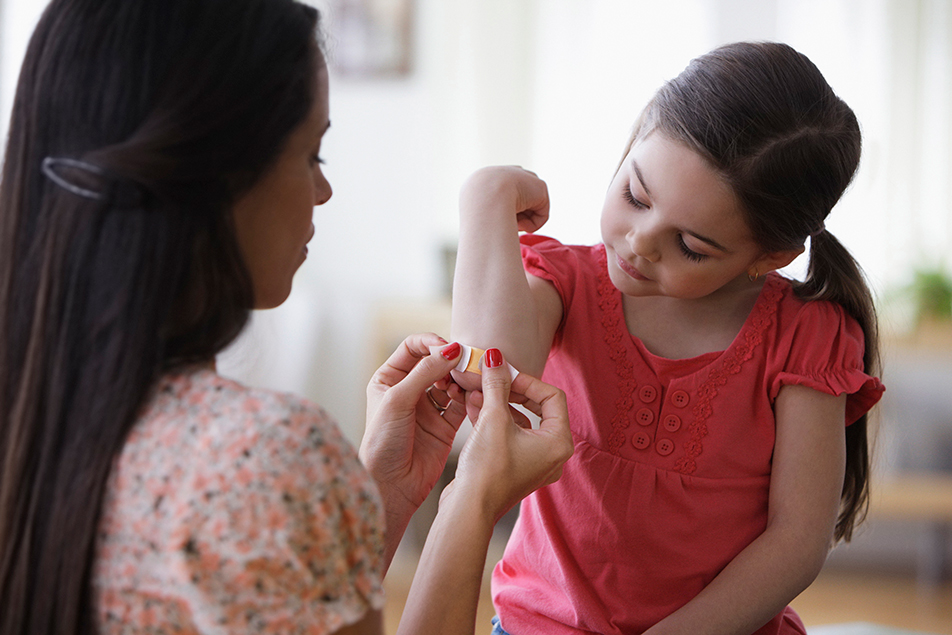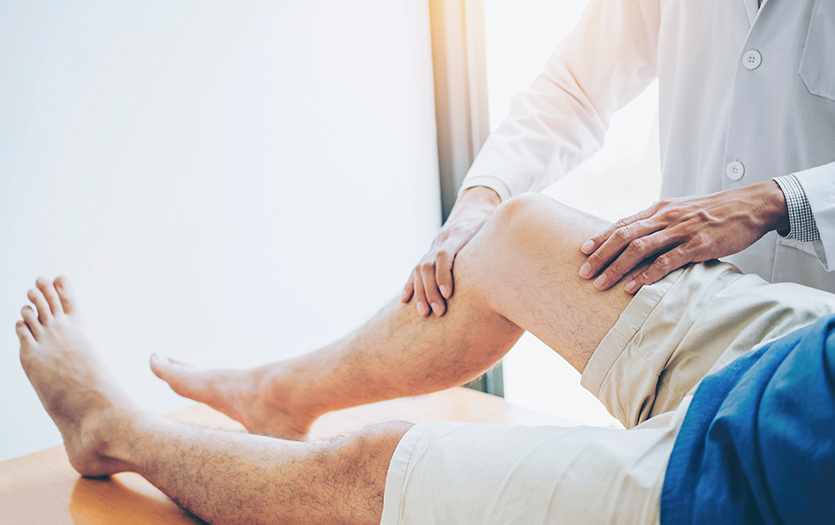
This post was written by Brian Wenger, Pharm D Candidate, and reviewed by Michele Swihart, Pharm D.
Kids are out of school and spending more time outside, riding, running and exploring. These activities certainly increase the likelihood of a child tripping or falling, and that rough concrete or pavement can lead to cuts and scrapes. These are not only unpleasant and painful for your children, but also can lead to infection if not properly cleaned and treated. Here are some general guidelines for caring for your little one’s bumps and ouchies.
Cleaning a cut or scrape
When your child gets a minor cut or scrape, there is a simple process for taking care of the injury.

- The best way to prevent infection is to clean the wound carefully, as described above.
- Avoid antiseptic solutions such as hydrogen peroxide, as these can worsen the irritation in the wound. That white fizz you see is actually damaging healthy cells, too.
Dressing a cut or scrape
- First, apply petroleum jelly to the wound to help it heal faster and prevent scarring
To prevent further spreading of dirt/bacteria, use a tube of petroleum jelly instead of a jar
- Apply a sterile bandage/gauze and change it daily
Do not “let it breathe” – This can cause the wound to dry, reopen and get infected
- Reapply petroleum jelly daily
- When you see a scab forming, you can uncover the wound
Medication
.jpg)
A lot of people question whether they need to apply a topical antibiotic. Currently, the American Academy of Dermatology does not recommend the use of over-the-counter antibiotics such as Neosporin® for minor cuts and scrapes. Using these medications when they are not really necessary can lead to the growth of bacteria that are more resistant and harder to get rid of. They can also cause allergic reactions which lead to a cycle of worsening symptoms. Use these antibiotics, instead, for more severe injuries and under a physician’s guidance.*
Elevating care
If you experience any of these symptoms, or the wound appears to be getting worse, seek additional medical care.
- The wound won’t stop bleeding after 5 minutes of constant pressure
- The injury is from an animal bite or burn
- It is a deep puncture
- The cut appears to require stitches
- There is debris/dirt in the wound after cleaning
- It is more than 3/4-inch long or more than ¼-inch deep
- It has developed signs of infection (pus, increased redness, swelling or ongoing pain)
- There is no sign of healing after several days
*Always follow your doctor’s recommendations. If your doctor tells you or your child to use topical antibiotics, follow their recommendations. This is general information for minor cuts/scrapes that are self-treated.



